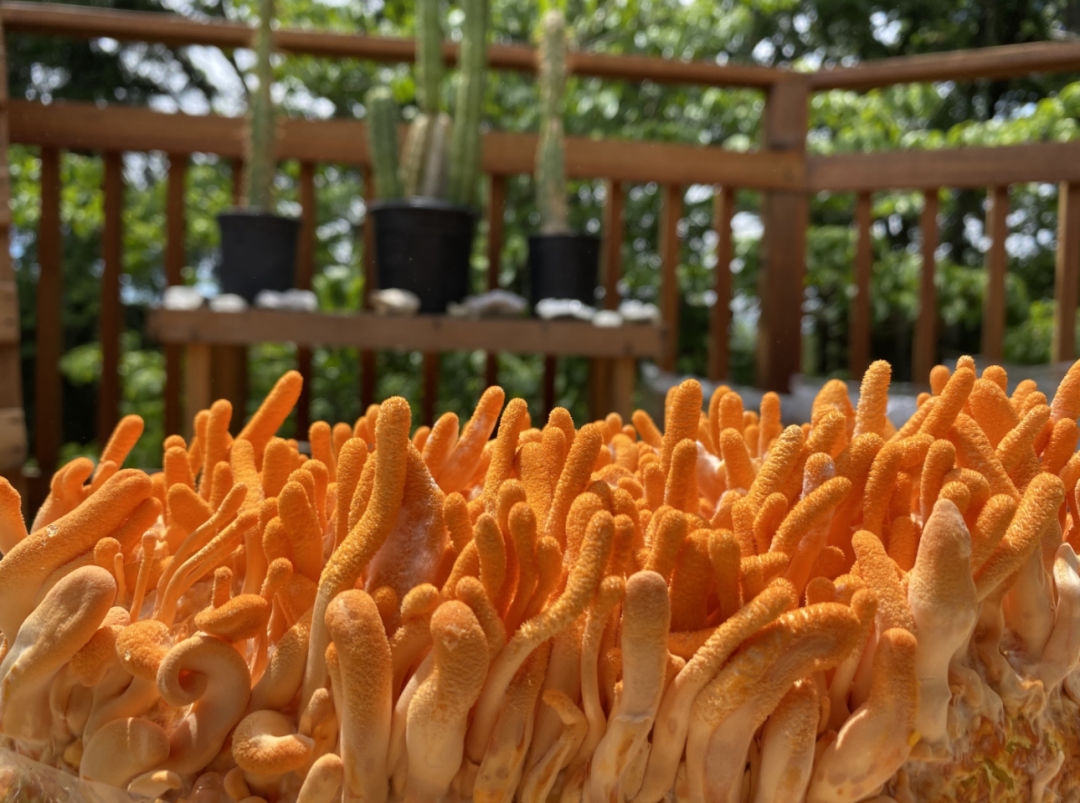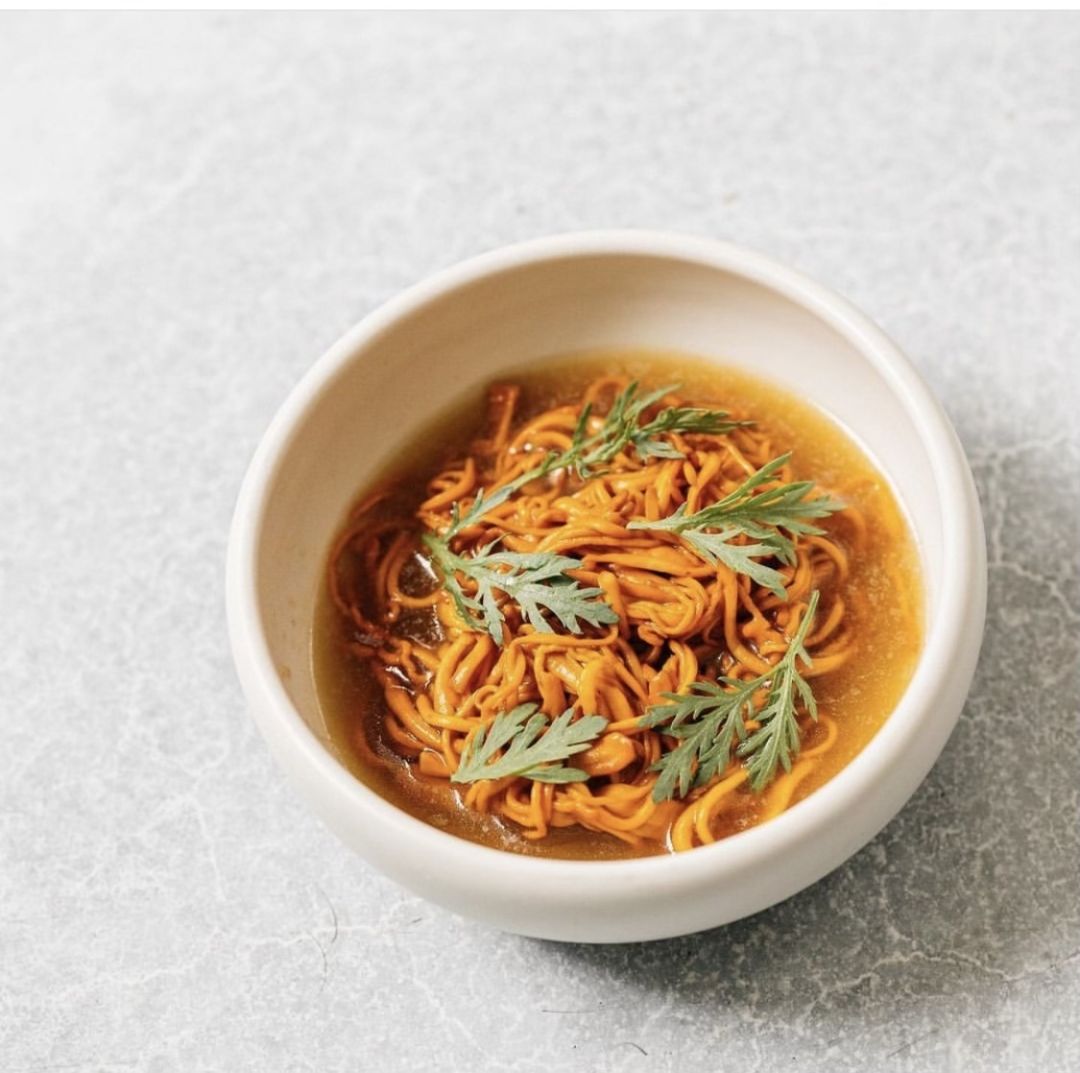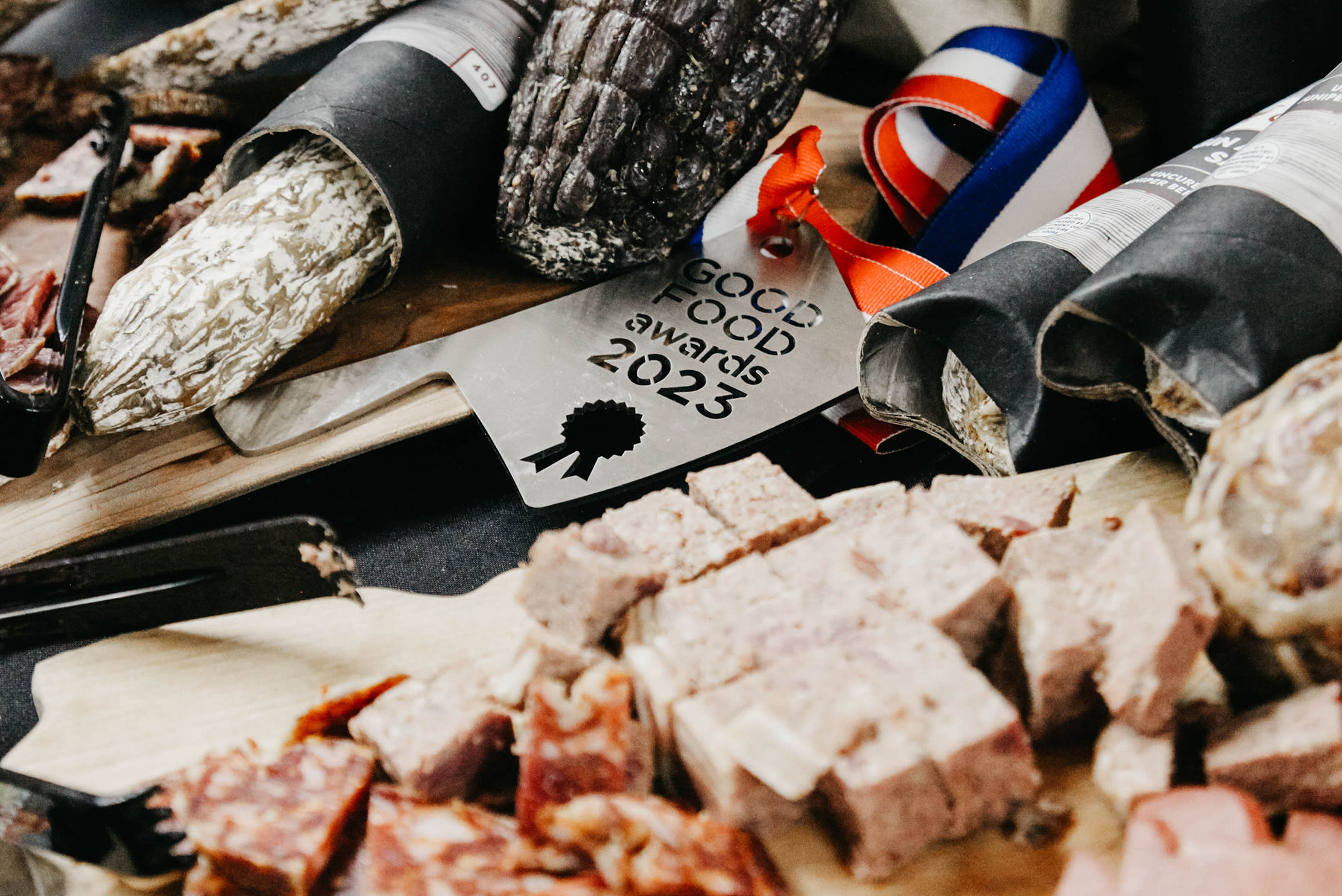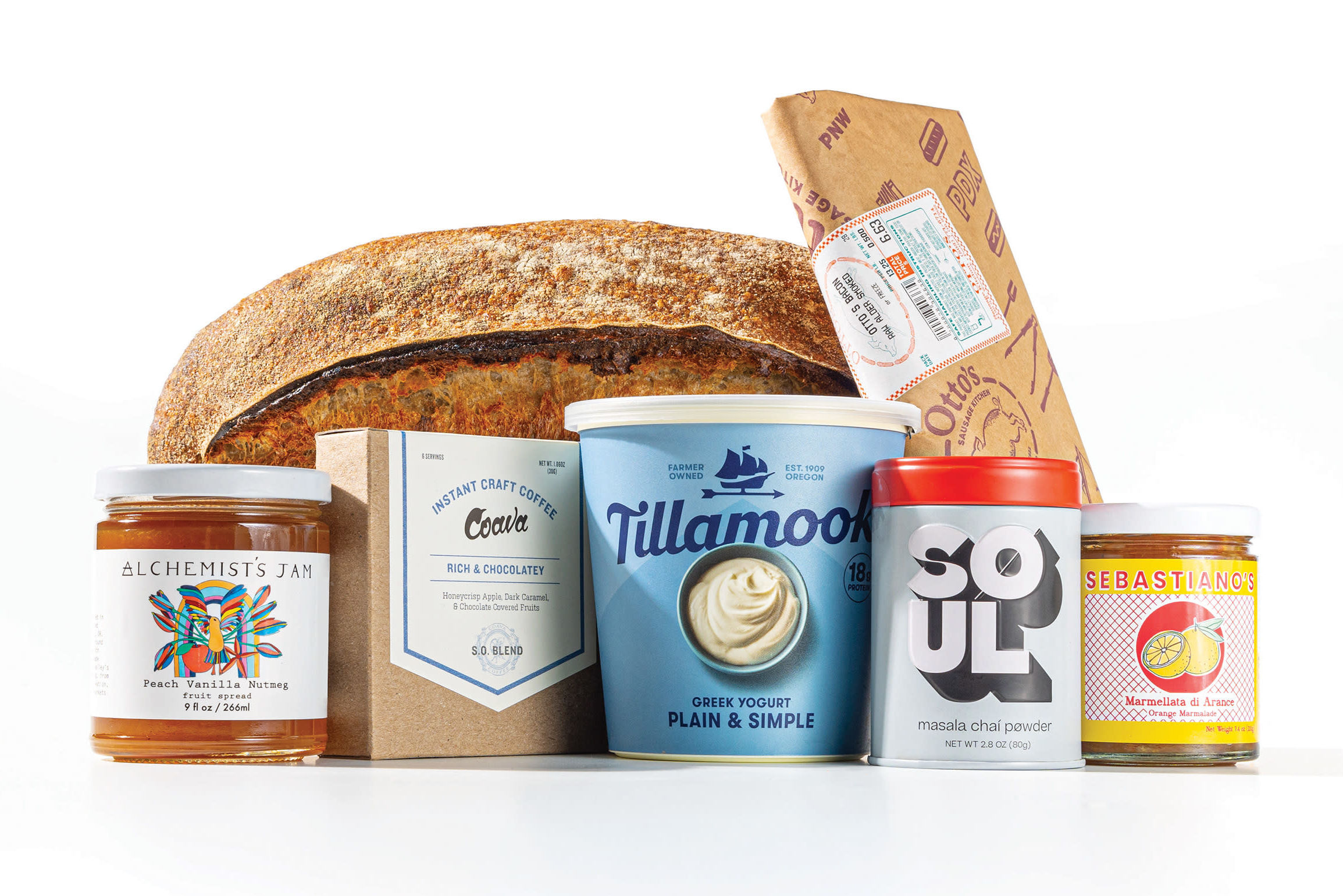Cordyceps Fungus Is Lurking in Portland Food and Drink

Cordyceps militaris mushrooms grown by Bridgetown Mushrooms
In one of many sickening scenes in the HBO series The Last of Us, a professor of fungi, clad in a fully-enclosed hazmat suit with a breathing apparatus, opens a cadaver’s mouth and cautiously reaches in with her pliers. A bundle of cordyceps fungus emerges, tentacle-like and sprawling. The pliers clatter to the floor, and she dashes out of the room while the cordyceps continues to snake out of the deceased’s mouth.
In The Last of Us, we flash back to 1968, when scientists warn that global warming could cause fungi to adapt so they could make the jump from cold-blooded insects to warm-blooded humans, causing a worldwide crisis. And indeed, within a matter of hours after the professor cuts into the cordyceps-infected body in 2003, cordyceps has caused society to collapse. Cordyceps-infected zombies are stampeding and breaking windows, trying to fatally bite and infect every other human in sight. It’s much more than a pandemic; it’s a full-on apocalypse.
Cordyceps is real, and though it doesn’t function quite the same as it does in the show, it is indeed a parasitic fungus, and it has the ability to take over insects’ bodies and minds. The infected insects, usually ants, are driven by the fungus to climb up branches, and the fungus eventually consumes their body tissue and they die. Mushroom-like growths protrude from the corpse, and spores from the fungus rain down, infecting innocent ants below. Luckily, it’s very unlikely that cordyceps could ever evolve to infect humans. Even if it did manage to survive at human body temperature, our nervous systems are significantly different from insects’, so cordyceps mind control is pretty implausible.

Grilled cordyceps in caramelized lobster broth with chrysanthemum greens from Berlu
But in the real world, cordyceps is a friend, not foe. A wild variety of cordyceps, cordyceps sinensis, has been prized in traditional Chinese medicine for centuries for its numerous possible health benefits, including reducing inflammation, helping the body utilize oxygen during workouts, slowing the growth of tumors, and even acting as an aphrodisiac.
“In North America, we generally have a phobia of mushrooms. There are a lot of headlines about death cap mushrooms and destroying angels,” says Trevor Huebert, founder of Tigard-based mushroom cultivator Bridgetown Mushrooms. “We’re trying to rewrite that narrative.” The company cultivates fresh and dried culinary mushrooms including blue oysters, shiitake, and maitake mushrooms that it sells at farmers markets and to local food businesses including Mama Bird, Kim Jong Grillin’, and Grand Central Bakery. It also grows adaptogenic mushrooms including reishi, lion’s mane, and cordyceps that are sold in dried or tincture form.
The cordyceps species that Bridgetown cultivates is called cordyceps militaris, which contains even more of the two beneficial components, adenosine and cordycepin, that you’d find in cordyceps sinensis. Luckily, unlike cordyceps sinensis, cordyceps militaris doesn’t require turning insects into zombies to grow. Instead, you can cultivate it on a bed of brown rice that’s enriched with similar nutrients you’d find in insects like B vitamins, minerals, and calcium. Within about four days, Huebert says, the rice grains are indistinguishable and have congealed into a sort of orange-colored cake; between 40 and 90 days, you’ve got cordyceps fruiting bodies ready to harvest. They can be cooked fresh into dishes, made into teas dried or fresh, or dried and turned into tinctures.
Huebert uses fresh cordyceps to make tea. “It’s a very tangible experience,” he says. “You can almost feel like you’re high on cordyceps. It causes this really tangible sense of mental clarity, and it’ll really bring ease to your breathing—you just feel really clear and awake.” He also suggests consuming cordyceps in a cup of tea or coffee to reduce stress, or taking tincture under the tongue or putting it in smoothies before or after a workout to help with muscle recovery.

It looks like a regular latte, but the Carmela Soprano latte is infused with cordyceps powder.
Image: Courtesy Best Friend Cafe
A couple days ago, I stopped at Best Friend Cafe, a smoothie bar and coffee shop, to try the Carmela Soprano latte. It’s made with coconut caramel, a double shot of espresso, milk of your choice, and organic cordyceps powder. “We did a little recipe testing to see what tasted best with our house made caramel, and cordyceps just carried the flavor very well,” says co-owner Margaux Muller. “It tastes creamy, it’s got a bit of a malt flavor, and it pairs well with the coffee as well.” I didn’t taste anything overly mushroomy—a hint of butteriness, a hint of earthiness, and a little bit of chicory-like bitterness. But when I got home, I sat down, energized and clear-headed, grabbed my guitar, and wrote one of the best songs I’ve ever written in just an hour.
But for some, the flavor of cordyceps alone is a major draw. “They might be my favorite ingredient,” says Vince Nguyen, chef-owner of Vietnamese tasting menu sensation Berlu. He first tasted them at Angler, a Michelin-starred restaurant in San Francisco, where they were grilled and served with chicken broth. “Beyond being earthy, it has a really unique sweetness when they’re cooked, so it lends itself really well to being grilled,” he says. “And the noodle-like texture and aesthetic is a lot of fun.” At Berlu, he crafted his own take on a cordyceps dish: grilled and served in caramelized lobster broth, topped with fresh chrysanthemum greens. It was last spotted on the tasting menu in November; he plans to add it to the menu again soon.
Portland is a mushroom-loving town, and they're particularly hot right now. Knowing a good mushroom foraging spot is one of the highest forms of social currency here, and psilocybin therapy is on the cusp of launching statewide. So what does this grotesque TV show mean for the future of mushrooms? It’s hard not to be grossed out by scenes of cordyceps tendrils slithering around fingers and sprouting out of human heads in The Last of Us, but luckily that’s the world of fiction.
“I don’t have a pulse on whether The Last of Us is causing more mycophobia, or whether it’s causing more of a desire to explore [fungi],” says Huebert. “We shouldn’t be afraid of these things. They’re here to teach us about how to have healthier bodies…and how to live in harmony with nature.”




